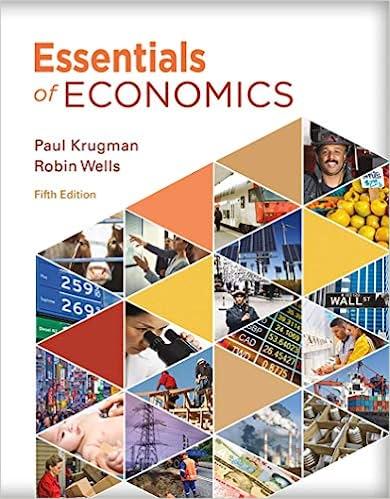If you like instant taste-bud gratification and live in one of the growing list of cities that
Question:
If you like instant taste-bud gratification and live in one of the growing list of cities that enjoy Amazon’s same-day one-hour restaurant delivery, life has become so much more gratifying. And if you live in one of the many locations where Amazon offers same-day delivery of merchandise, you may wait longer than an hour, but your goods will arrive at your doorstep that day.
We can thank Amazon’s army of Kiva robots for the speedy deliveries. These robots spend their days hauling very tall shelves of merchandise, weighing up to 700 pounds, to human
“pickers” who assemble orders, and to human “stockers” who sort incoming inventory.
By 2018 Amazon had more than 100,000 robots working in its 75 fulfillment centers, to help with distribution of the 5 billion items it carries. Before the arrival of bots, human employees did this tedious work, often walking 10 to 15 miles daily, carrying heavy loads. Without humans walking miles to the merchandise, warehouse operations have become much more efficient. In addition, because robots don’t need aisles between shelves like people do, there’s more room for merchandise storage in Amazon’s fulfillment centers.
Over the past 20 years, Amazon has invested an enormous amount of money perfecting its warehouse management and order fulfillment operations to satisfy customers’ desire to receive their items quickly. The company’s spokesperson, Phil Hardin, explains the widespread use of robots this way: “It’s an investment that has implications for a lot of elements of our cost structure. It has been a great innovation for us, … and we think it makes our warehouses more productive.”
Analysts estimate that by using robots, Amazon has saved 48% of its costs of fulfilling an order.
And Amazon’s competitors have definitely noticed. More companies, particularly other big-name retailers like Staples and Walmart, are using robotic systems for fast order fulfillment to compete with Amazon’s speedy delivery times. However, with Amazon’s huge advantage, it remains to be seen whether these other retailers can catch up.
Questions:-
1. Describe the shift in Amazon’s cost structure based on the concepts from this chapter. Is Amazon on a short-run or long-run cost curve? What are the relevant returns to scale in Amazon’s operations?
2. What are the pros and cons of Amazon’s strategy?
3. What advantage does a robotic system give Amazon over its rivals? How likely is it that they will catch up with Amazon? What market factors does it depend upon?
Step by Step Answer:






